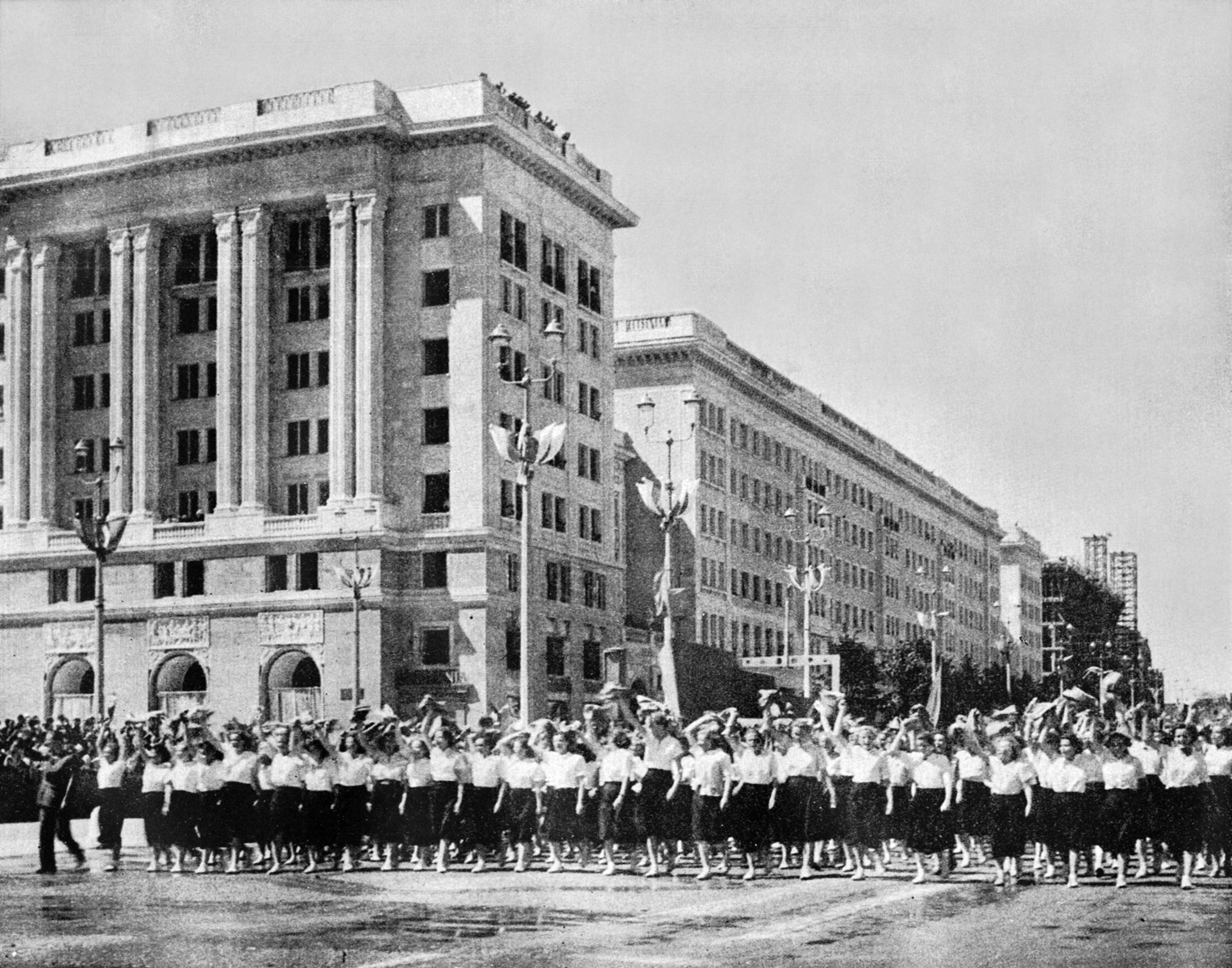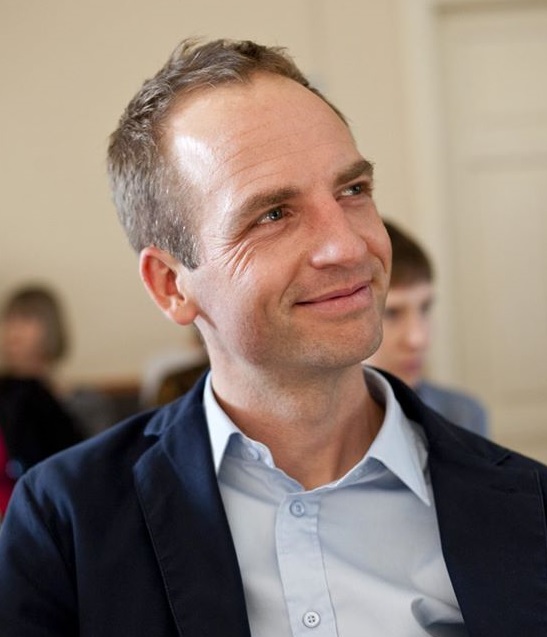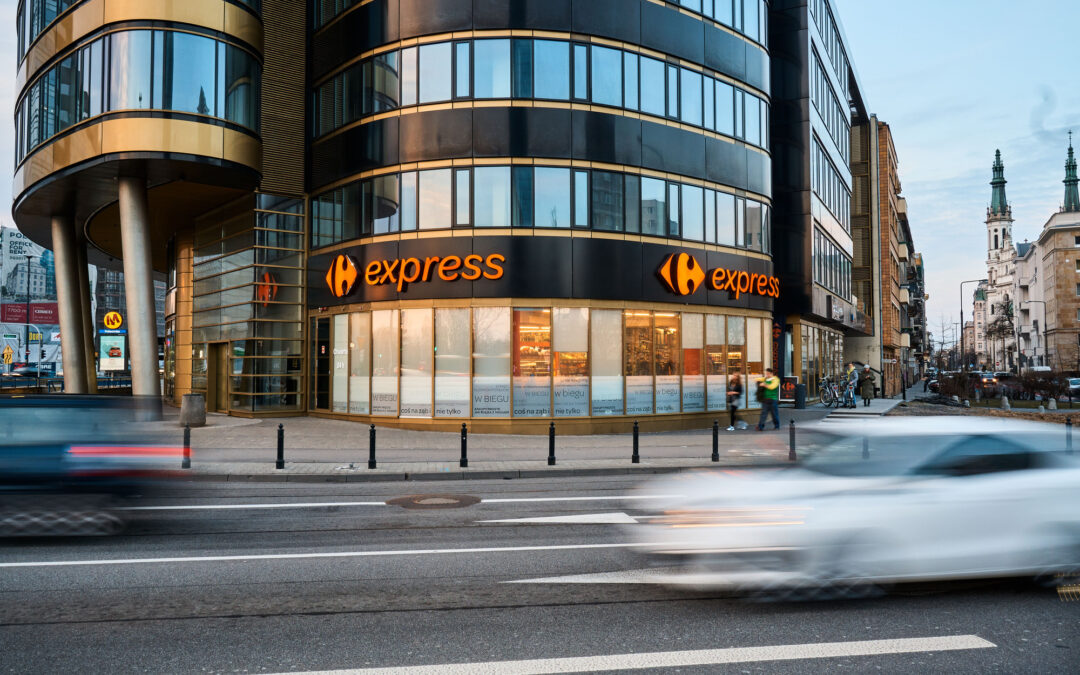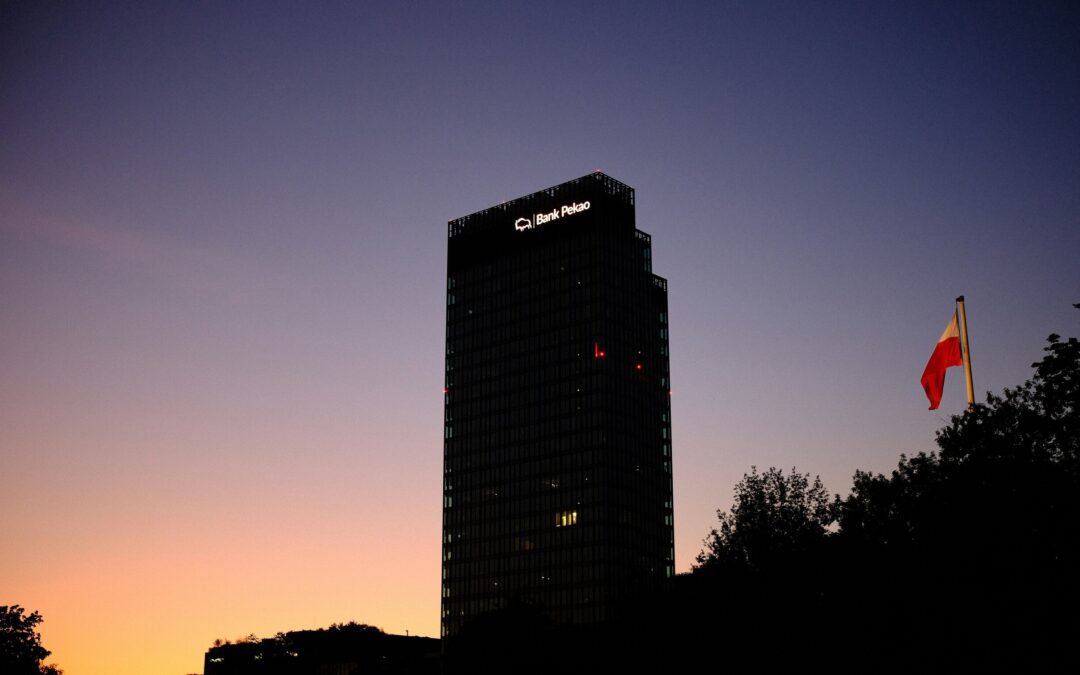One of Warsaw’s milk bars – cheap, state-subsidised cafeterias that were widespread during the communist era – which was forced to close down during Covid lockdown has been added to the regional register of historic monuments to preserve its original 1950s interior.
Złota Kurka (Golden Hen) was a popular eatery on Maszałkowska Street in the centre of Warsaw. It operated under that name from the early 1960s until 2020, but had originally opened a decade earlier, in 1952, when it was simply known as the Bar Mleczny (Milk Bar) for the newly opened Marszałkowska Housing District (MDM).
Punkt wydawania bezpłatnych posiłków na terenie Warszawy; bar mleczny Złota Kurka przy ulicy Marszałkowskiej 55/73, luty 1990 r. pic.twitter.com/gLGdz7h7nv
— PAP Arch Foto (@paparchfoto) February 10, 2022
Its decor survived almost unchanged from that period, when a neon sign outside depicting a bottle of milk and cow’s head advertised the presence of the cheap restaurant, reports TVN24.
The interior “possesses great documentary value as one of few such completely preserved service premises from the period of the construction of the MDM,” wrote Jakub Lewicki, historical protection officer for the Masovia Province that Warsaw belongs to, explaining why he had added the site to the monuments register.
Naleśniki, kopytka🥞, kluski śląskie czy owocowa z makaronem❓❤️ Kto pamięta bar mleczny Złota Kurka przy ul. Marszałkowskiej 55/73. Lokal jest właśnie remontowany pod okiem Stołeczny Konserwator Zabytków. Kto wie może niedługo zjemy tam obiad. pic.twitter.com/KdGR0NmPme
— Warszawa (@warszawa) October 6, 2021
The MDM residential area in the heart of Warsaw is an example of early socialist realist architecture, built in the early 1950s. The Polish capital was almost entirely rebuilt in the aftermath of the Second World War, when 85% of it was reduced to rubble.
“The artistic value of the interior is elevated by two large-format animalist wall mosaics by Hanna Żuławska, a leading artist whose works had a significant influence on the appearance of reconstructed Warsaw,” Lewicki continued.

Marszałkowska Housing District in 1952, the year that construction was completed.
Each of these mosaics, on the window pillars, measures around 310 x 165 cm, with one depicting groups of goats, sheep and birds, and the other cows, hens and chicks. The other walls feature light beige, handmade tiles with pictures of domestic animals and animals.
A plaster decoration is still in place on the ceiling, while the ground floor vestibule retains its original terrazzo floor. The decorative ceramic tiles combining socialist realist style with folk art provide high artistic value, according to Lewicki, with the 400 tiles comprising a unique collection of finishing ceramics with an individual aesthetic expression.

The wall mosaics (photos: Mazowiecki Wojewódzki Konserwator Zabytków)
Though Poland’s milk bars – which, despite the name, also serve a variety of non-dairy dishes – first emerged around the turn of the 20th century, they became particularly widespread during the communist era.
Since 1989, the growing wealth of Poles and the spread of new types of cuisine have seen a significant decline in the number of milk bars. But some continue to operate – often with décor and menus that have hardly changed over the decades – while new ones have opened amid a nostalgic revival.
Who knew? Polish milk bars are like vinyl records.
“It’s the hipster projection of what the milk bar experience was. They can look at it with detachment and irony because they didn’t live through a time when the milk bar was a necessity.” https://t.co/7QfYPhvcTI
— Laurence Darmiento (@ldarmiento) April 21, 2020
Almost 100 milk bars currently receive state subsidies in Poland, but rising food prices are making it hard for them to survive as to receive the subsidies they cannot put up sales margins above a certain level, reports Fakt.
The government allocated 20.3 million zloty (€4.35 million) this year, an increase of 0.5% on 2021. However, consumer prices are predicted to rise 6.8% in Poland in 2022.
Main image credit: Mazowiecki Wojewódzki Konserwator Zabytków

Ben Koschalka is a translator, lecturer, and senior editor at Notes from Poland. Originally from Britain, he has lived in Kraków since 2005.




















